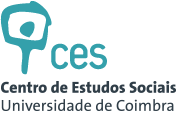Teses Defendidas
"Birthing democracy" Between birth policies in Portugal and mothering new forms of democracy in Brazil
11 de Dezembro de 2012
Governação, Conhecimento e Inovação
João Arriscado Nunes
e
Rob Hagendijk
Ever since it emerged in antiquity 'democracy' has been contested, criticized and reinvented. In the past four decades debates about democracy have focused on the limitations of 'representative' democracy. Although positions differ widely with respect to how to handle the problems regarding representative democracy, there is considerable convergence in the diagnosis. Major problems are observed with respect to the contradiction between the mobilization and institutionalization of politics, political apathy and the citizens' inability to understand problems and to assess policy decisions, the increasing complexity of scientific and technological innovation in relation to social issues, and the overvaluation of representative mechanisms.
In recent years there has been a growing awareness in the West of the conceptions and practices of government that have emerged in other parts of the world that suggest new ways of responding to the crisis of representative democracy. One such alternative has been the High Intensity Democracy (HID)proposal of Boaventura de Sousa Santos. The HID approach is strongly influenced by (re)democratization processes of the global South, ignited by popular movements often supported by left-wing administrations, aiming to fight inequalities, violence, exclusion and corruption that for many years prevented the access to citizenship.
Over the last decades, participation has prevailed as the optimistic note concerning the future of democracy. If only states would welcome citizen initiatives and grassroots movements as triggers of democratic innovation. That might overcome the problems and also especially those in which a variety of knowledge and experience clash. If only states would find a feasible way around the inadequacies of the so-called double delegation model.
This study seeks to understand how in different societies participatory practices amount to forms of high intensity democracy. How do the features of such participation vary and what do they tell us about the essential features of HID in practice across diverse contexts? How are different forms of knowledge and experience confronted with one another in such participatory practices? What possibilities are there for a more horizontal relationship between different forms of knowledge as they are mobilized by a plurality of actors involved in decision-making processes? Two case studies are used to explore what HID may amount to in different settings as a contribution to the discussion about HID and how to develop it in theory and practice: the participatory Budgeting case of Belo Horizonte, in Brazil, and the recent Portuguese protests against the closure of maternity wards. A list of HID's main features is presented. As it turns out the paramount features that keep HID alive are (a) critical exploration of whatever the state and its allies propose and (b) innovative, yet transgressive creative and innovative ways to inform and mobilize citizens.
Data de Defesa
Programa de Doutoramento
Orientação
Resumo
In recent years there has been a growing awareness in the West of the conceptions and practices of government that have emerged in other parts of the world that suggest new ways of responding to the crisis of representative democracy. One such alternative has been the High Intensity Democracy (HID)proposal of Boaventura de Sousa Santos. The HID approach is strongly influenced by (re)democratization processes of the global South, ignited by popular movements often supported by left-wing administrations, aiming to fight inequalities, violence, exclusion and corruption that for many years prevented the access to citizenship.
Over the last decades, participation has prevailed as the optimistic note concerning the future of democracy. If only states would welcome citizen initiatives and grassroots movements as triggers of democratic innovation. That might overcome the problems and also especially those in which a variety of knowledge and experience clash. If only states would find a feasible way around the inadequacies of the so-called double delegation model.
This study seeks to understand how in different societies participatory practices amount to forms of high intensity democracy. How do the features of such participation vary and what do they tell us about the essential features of HID in practice across diverse contexts? How are different forms of knowledge and experience confronted with one another in such participatory practices? What possibilities are there for a more horizontal relationship between different forms of knowledge as they are mobilized by a plurality of actors involved in decision-making processes? Two case studies are used to explore what HID may amount to in different settings as a contribution to the discussion about HID and how to develop it in theory and practice: the participatory Budgeting case of Belo Horizonte, in Brazil, and the recent Portuguese protests against the closure of maternity wards. A list of HID's main features is presented. As it turns out the paramount features that keep HID alive are (a) critical exploration of whatever the state and its allies propose and (b) innovative, yet transgressive creative and innovative ways to inform and mobilize citizens.

